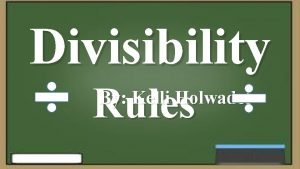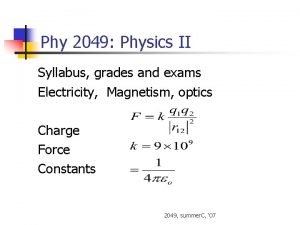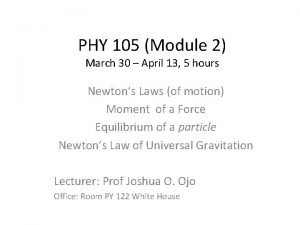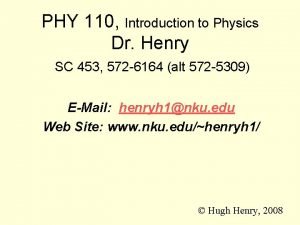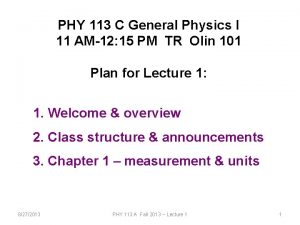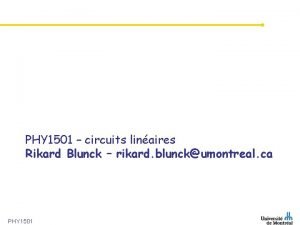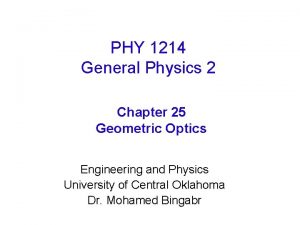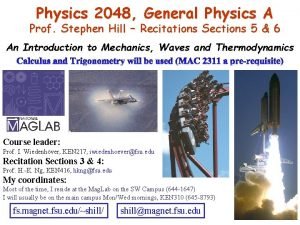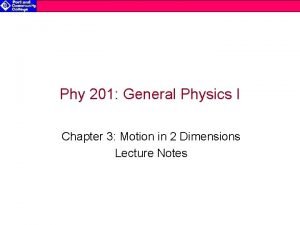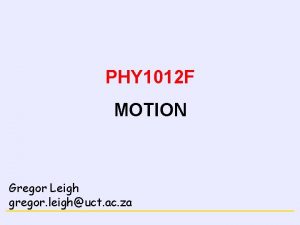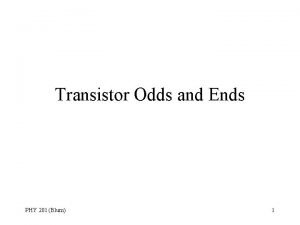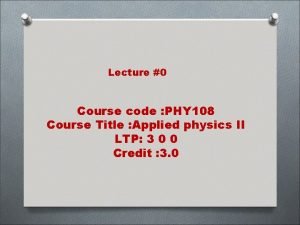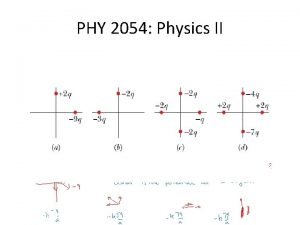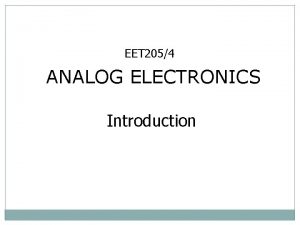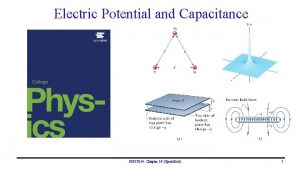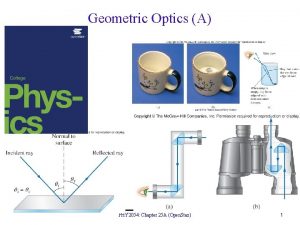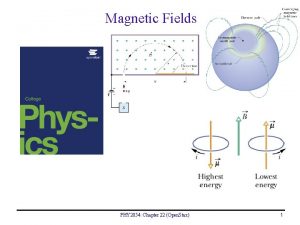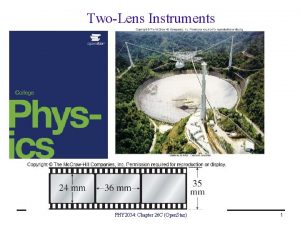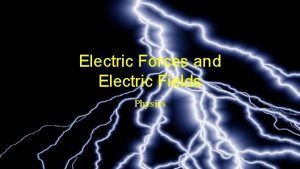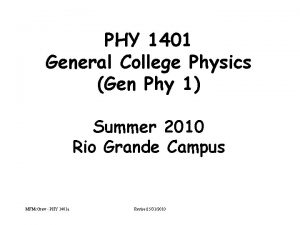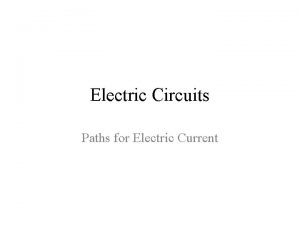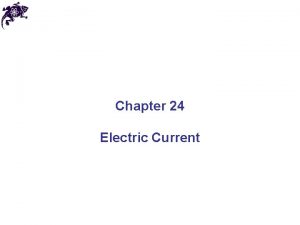PHY 2054 Physics II What is the Electric



















- Slides: 19

PHY 2054: Physics II What is the Electric Field at the origin? What is the electric potential at the origin?

PHY 2054: Physics II What is the direction of Electric Field at the origin? What is the electric potential at the origin

PHY 2054: Physics II • Calculate the Electric Field at P • Calculate the el. potential at P

PHY 2054: Physics II • Point charge • Distribution of charges • Line charge at an edge • Disc on an axis through the center

PHY 2054: Class Quiz If 500 J of work are required to carry a charged particle between two points with a potential difference of 20 V, the magnitude of the charge on the particle is: A. 0. 040 C B. 12. 5 C C. 20 C D. cannot be computed unless the path is given E. 25 C

Two particles with charges Q and -Q are fixed at the vertices of an equilateral triangle with sides of length a. The work required to move a particle with charge q from the other vertex to the center of the line joining the fixed particles is: A. 0 B. k. Qq/a C. k. Qq/a 2 D. 2 k. Qq/a E. 1. 4 k. Qq/a q Q -Q

PHY 2054: Physics II • • • a= 39 cm q 1 = 3. 4 p. C q 2 = 6 p. C E at the center? What is the potential at the center?

Capacitors and dielectrics • Introduction of a dielectric capacitance increases • With battery connected potential difference is fixed and maintained, charge increases. In other words, energy increases => dielectric is pushed out • When the battery is not connected, charge stays the same, the energy decreases dielectric is pulled in.

Problems

Problems Here there are two capacitors in parallel

Videos • How flash works • http: //electronics. howstuffworks. com/capacit or. htm

Here is one 16. 37 The top serial combination has equivalent capacitance C 1 = 2μF the bottom is C 2 = 4/3 μF. The total equivalent Capacitance of the two in parallel is 2+4/3 = 10/3 μF. The charge on the outside plates on top is 2 x 90 = 180 μC =Q 6 = Q 3 On the bottom outside plates is 4/3 x 90 = 120 μC = Q 2 = Q 4 V 6 =potential difference across the 6 μF cap = Q/C = 30 V V 3 = 60 V V 2 = 60 V and V 4 = 120/4 = 30 V How much energy is stored on each capcitor? Q 2/2 C = CV 2/2 2 4/3

16. 38 What is the equivalent capacitance? a. 38 F b. 12 μF c. 20 μF d. 6 μF What is the total energy provided by the battery? How much energy is on the 4 μF capcitor? On the 2 μF capacitor? On the 24 μF capacitor? On the 8 μF capacitor? 7. 78 m. J 2. 59 m. J 1. 30 m. J 0. 97 m. J 2. 92 m. J

Problems

16. 44

16. 61

----- = An infinite sequence of capacitors, each equal to C. Find the equivalent capacitance S. But watch… algebra-wise this is also described by the equation… Solve for S. = If you just look at the first link, by replacing s in the last arm by C, its equivalent capacitance is 1. 33 C, not a bad guess for the whole thing

If the areas are A 1 and A-A 1. C 123 = 2. 4 μF, q = 28. 8 μC C 24 = 12 μF C 1234 = 3 μF q =36 μC C 1 = C 3 = 8 μF, C 2 = C 4 = 6μF, V = 12 V When the switch S is closed, how much charge passes through point P? How much passes through the switch S? Δq = 36 -28. 8 = 7. 2 μC Q 4 = 18μC

The last problem • A 10 V battery is connected to a series of n capacitors. Each of the capacitance is 2 μF. If the total energy stored is 25 μJ, what is n? a. 4 b. 25 c. 10 d. 50 e. None of these How much is the value of n, if the total energy stored is 10 μJ? a. 4 b. 25 c. 10 d. 50 e. None of these
